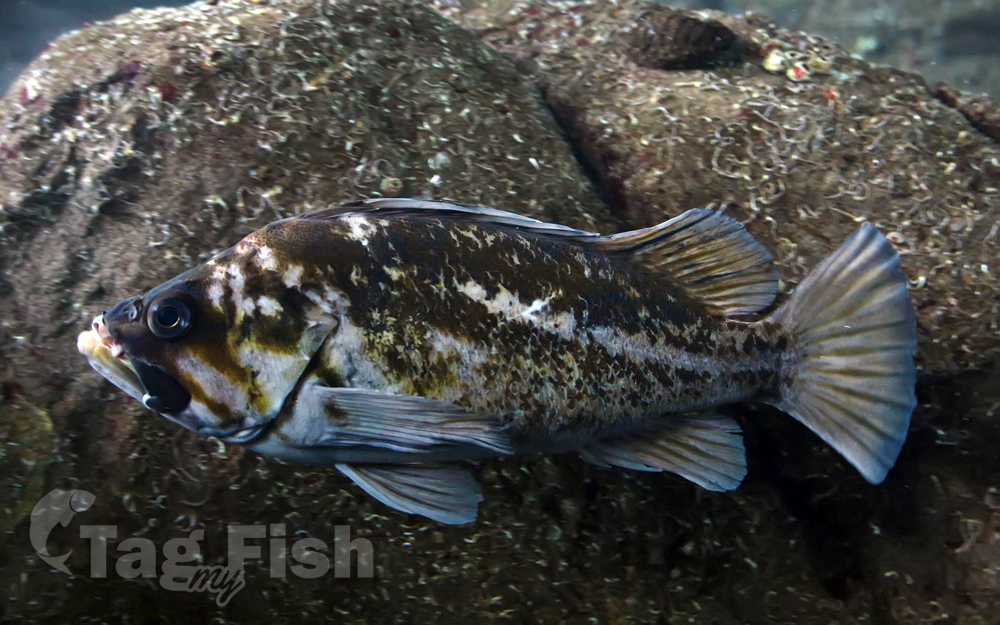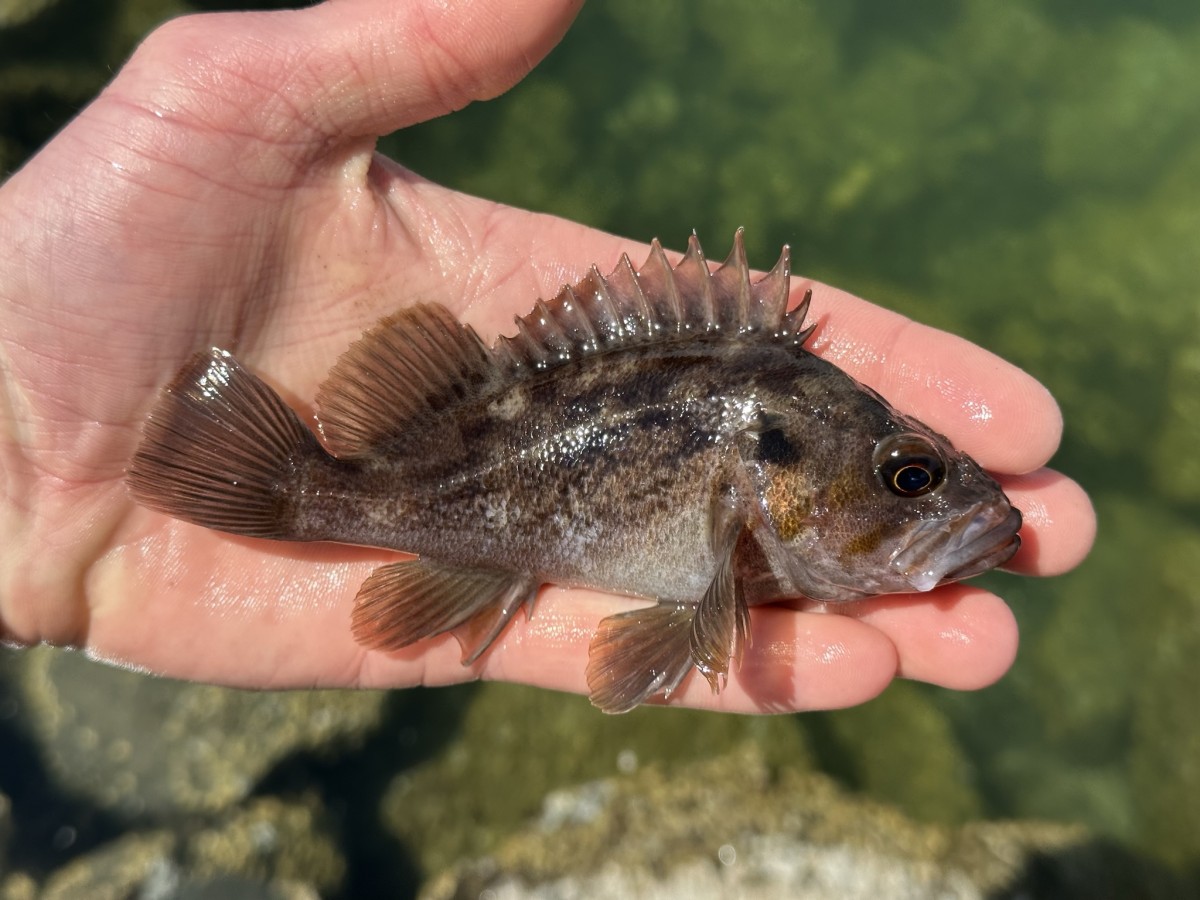Brown rockfish
(Sebastes auriculatus)

Classification
General data
The Brown Rockfish has a deep body which has a depth of 33% to 37% of its standard length and they typically have spines on the head which has a small terminal mouth. The overall color is reddish-brown with many dark markings, these include a dark spot on the rear upper angle of the operculum. The eyes frequently show a red or orange tint. There are 2 orange or orange-brown lines radiating backwards from each of the upper jaw and the eye. The body is covered in scales.
The spines on the head are robust and are made up of nasal, preocular, postocular, tympanic, coronal, parietal, and nuchal spines, although in some specimens the coronal and nuchal spines can be absent and they never have supraorbital spines. The space between the eyes may be flat or slightly bulging.
The caudal fin is rounded or truncated. The dorsal fin has 13 spines and 12-15 soft rays while the anal fin has 3 spines and 5-8 soft rays.
This species grows to a maximum total length of 56 cm (22 in). The maximum recorded weight is 3.0 kg (6.6 lb).
Distribution and habitat
The brown rockfish is native to the northeastern Pacific. Its range extends from southern Baja California to Prince William Sound in the northern Gulf of Alaska. These fish are most abundant in the central and southern parts of Puget Sound and from southern Baja California to Bodega Bay in northern California.
The brown rockfish occurs at depths from the intertidal zone down to 287 m (942 ft) and prefer areas with rocky patches or hard substrates, inhabiting areas which vary in relief from low to high. They also frequently occur around artificial structures and objects such as piers and other man-made objects, like marine debris, such as tires.












